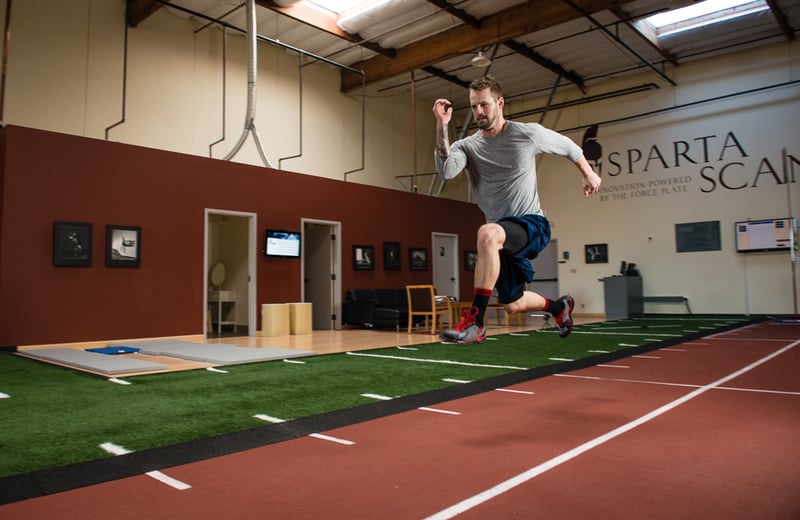
“I start where the last man left off.”
- Thomas Edison
At Sparta, we are always using objective data to quantify the effectiveness of our prescriptions. Part of this process is experimenting with new movements in order to evaluate how they could improve our program. While many may claim to have “invented” new and revolutionary exercises, the most effective movements are usually variations of foundational movements that have been done for years. Often, these movements are so basic that they have been forgotten about as a valuable method for training.
One great example of a foundational movement is hopping. A hop is defined as a jump off one leg onto the same leg and is very similar to jumps which are defined as two legs to two legs. Hopping is a very simple movement that most of us probably perfected on the playground as kids. Unfortunately, through years of sports specialization, sitting in class or at work, and moving away from the natural patterns of play many have lost this basic ability to hop. While hopping is simple, it is not necessarily easy. Hopping requires high levels of both strength and body control, especially when performed at higher speeds and greater distances.
The hop is a great compliment to jumps (off 2 legs) because it reinforces the same reactive principles but magnifies the demand for body control, particularly by emphasizing stiffness. When a force is applied to a structure (i.e. landing on the ground), there is a displacement in the direction of the force (i.e. your ankle and knee bend). Stiffness is the ratio of the force divided by the displacement. High stiffness means that a large force produces a small displacement.
At Sparta, we use hops in our program as a reactive strength exercise to complex with our strength movements that use a REPS loading scheme. For Sparta Signature prescriptions, we use Depth Hops to train LOAD because they emphasize the vertical plane and the greatest amount of stiffness in the calves and quads. The prescriptions of Base Hops are assigned for EXPLODE because they emphasize lateral stiffness and bracing through the torso.
Depth Hops are performed with the goal of stiffness because this allows you to maximize the number of contacts in a set amount of time. This is done by increasing stiffness in the lower body in order to decrease time on the ground, and it is done by maintaining posture and rhythm with the upper body in order to turn over faster. We progress this movement from shorter boxes to higher boxes as athletes advance in level.
Maintain a stable, vertical trunk position
Keep the elbows at 90 degrees and rip from the shoulder to drive rhythm
Dorsiflex the foot to maintain stiffness and contact through the sweet spot
Simple movements like hopping are easy to take for granted, but they can be used as an effective training tool. Always evaluate what needs you are trying to meet with each exercise, and work to find the most effective progressions to accomplish your goals. Sometimes the movements that you mastered as a kid could become your newest tool for improving performance.